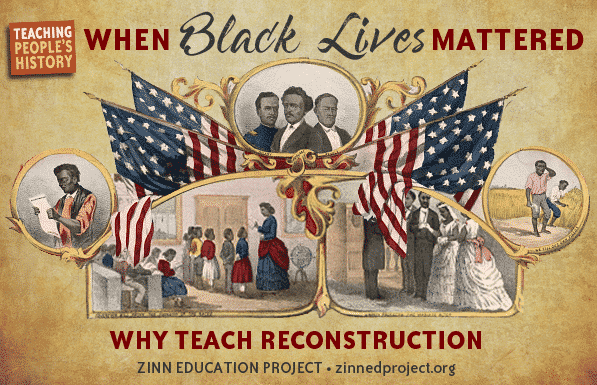Reconstruction; Early Success and Lingering Shadows of Racism in America

Howard Zinn writes history from the common man’s perspective and not the perspective of those in power. This image shows how the past is echoed in the present.
What is the time period in our history known as Reconstruction?
The time period in our history known as Reconstruction is 1865-1877. The Reconstruction era was the period after the Civil War that was the effort to reintegrate southern states from the Confederacy. Plans for Reconstruction began with President Abraham Lincoln as soon as he issued the January 1863 Emancipation Proclamation
What evidence shows that it worked to promote justice in the wake of slavery and the civil war
Reconstruction worked to promote justice for a short period of time to African Americans in the wake of slavery by giving African American men rights to vote, buy land and more than 1,500 positions of public leadership. In 1865 congress created a agency called the Freedmen’s Bureau that provided food, clothing, education , legal and employment services to everyone in the south including newly freed African Americans.
What got in the way of progress towards a more perfect union?
The North won the war and slavery ended but racism continued often with feelings of resentment over the costs of war. For a variety of reasons white people felt threatened by the liberation of African Americans and wanted to keep them in their place through laws known as “Black Codes”. These local laws limited social and economic freedoms of blacks immediately following the war. The Reconstruction Act of 1867 gave African Americans a voice in government for the first time in American history. However the Ku Klux Klan (KKK) tried to reverse the changes in a violent backlash that restored white supremacy in the south.
Federal and state governments failed to secure the rights guaranteed to former slaves by constitutional amendments. Racial bias was a national, not just a southern problem. Northerners became more absorbed in westward expansion and industrialization than with the problems of the former slaves. The supreme court under minded the power of the 14th and 15th Amendments by setting racial precedents based on “Jim Crow” laws. Britannica
The viewpoint of history changes depending on who’s telling the story. Usually its from a side in power and never any of the “normal people” who seem to be affected by it the most. The Reconstruction Era shows how we started to make good progress after the civil war only to be set back. It’s like a pendulum we get ahead, make some progress and then suddenly we go swinging back in a backlash. Even today in the 21st century we still face racism , it has never fully gone away but the 13th,14th,and 15th amendments passed back then have helped to promote civil rights justice for 150 years.
For more information on Reconstruction in the MIRROR see this LINK










